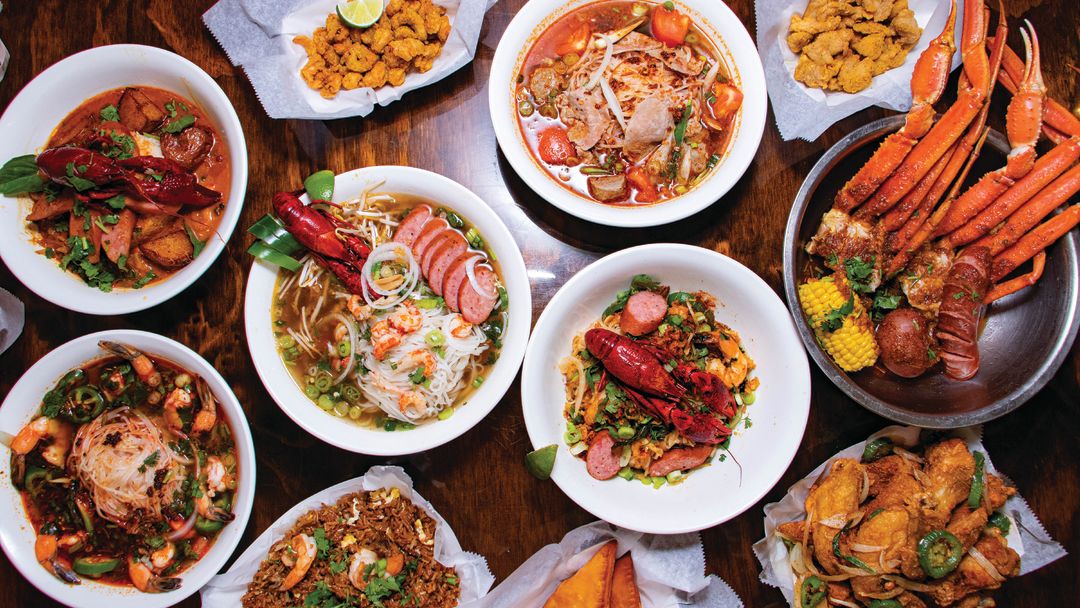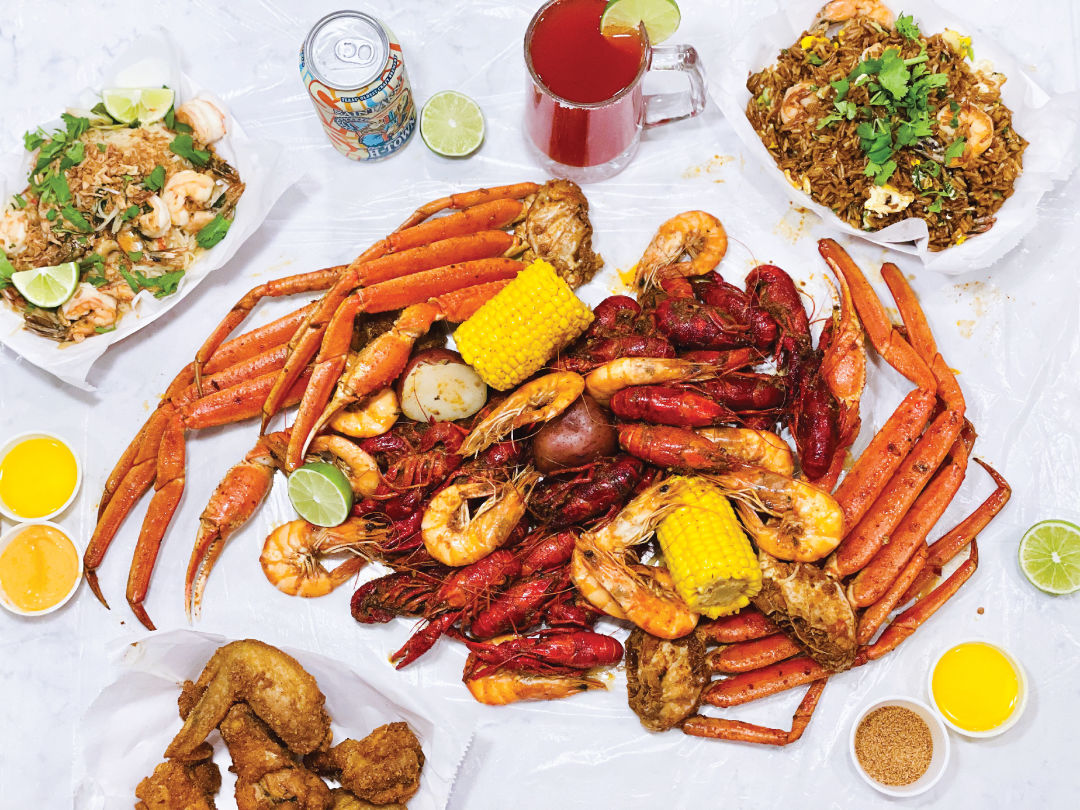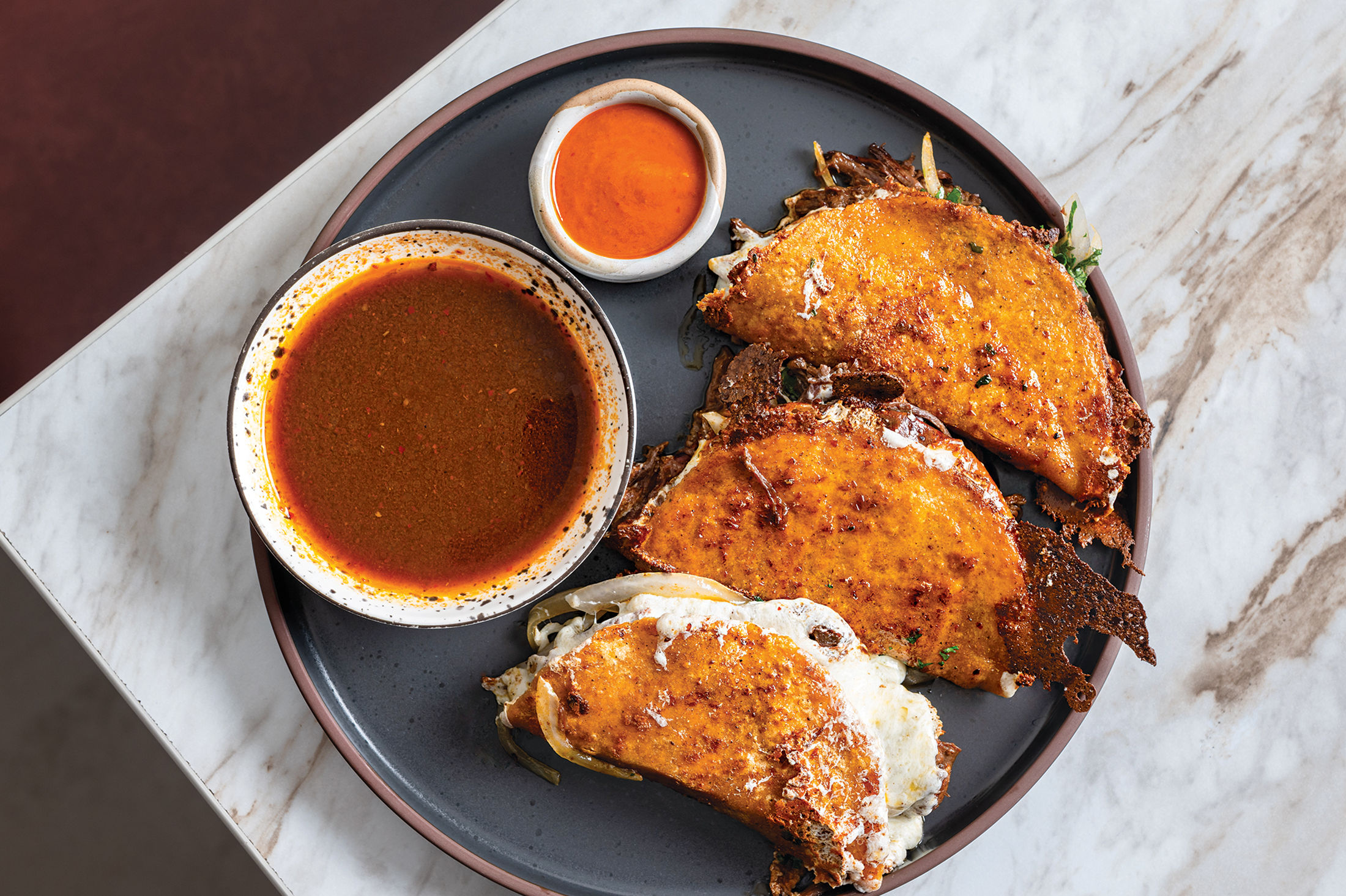How Viet-Cajun Crawfish Took Over Houston

LA Crawfish fuses Cajun dishes with garlic, butter and other herbs and spices used in Southeast Asian dishes.
Image: LA Crawfish
The sounds of cracking crustacean shells and the slurping of their delicious meat will be in earshot of restaurants around Houston with crawfish season kicking off soon.
Houstonians aren’t just special because we get to indulge beyond typical Cajun flavors that include cayenne pepper, lemon, bay leaves and other spices found in Louisiana dishes. No, here, we also get to indulge in Vietnamese-style crawfish, which has grown in popularity over the years, with more garlic and butter than the traditional method of cooking up mudbugs.
Viet-Cajun crawfish is a cooking approach that emerged in the early to mid-2000s and is more than just a creative way to boil one of Louisiana’s favorite delicacies. It’s a dish that arguably helped thrust Houston into the global culinary scene, making it a unique must-visit foodie city.
“I think Viet-Cajun crawfish put Houston in the national culinary spotlight. It was a style of cooking and cuisine that wasn’t available in most other parts of the world,” says Jenny Wang, who first tried the fusion crawfish in 2005. Wang was one of the earliest chroniclers of Viet-Cajun crawfish, writing about the best restaurants in Chinatown for My Table Magazine in 2010.
Houston’s Chinatown is typically defined as the area west of Beltway 8 to Redding Road, and south of the Westpark Tollway to Beechnut Street. Its location can be described as between Alief and Sharpstown, although some may include parts of both areas as Houston’s official Chinatown. Crawfish & Beignets and Cajun Corner were some of the earliest restaurants where Wang remembers trying the fledgling dish. It wasn’t until 2007, that the chronicler saw Viet-Cajun crawfish take off after Boiling Crab opened in Houston.
“The Vietnamese-Cajun crawfish that I tried before Boiling Crab were good, but Boiling Crab really took it to the next level with very, very generous amounts of garlic and butter, in addition to traditional Cajun seasonings,” Wang recalls. “I love all styles of crawfish, but the Boiling Crab was so satisfying that I found myself craving it several times a week. My personal motto is butter and garlic makes everything taste better!”
Wang saw those butter- and garlic-doused crawfish on menus in restaurants popping up in Chinatown soon after, heralding signs of a new food star in Houston.
The original Cajun-style crawfish that the Bayou City was used to is generally boiled with spices such as paprika, cayenne pepper and other flavors found in most Cajun food. Viet-Cajun crawfish, however, is seasoned with some Cajun seasoning, but also includes Southeast Asian herbs like lemongrass and ginger. Viet-Cajun crawfish are usually tossed with butter after they are cooked, an extra step not typically used in the Cajun style.
Once confined mainly to spring and lasting as long as summer permitted, crawfish farms spanning Louisiana and southeast Houston have broadened the season from January to August under favorable conditions.
A Flavorful Alliance
Minson Ngo, president of the popular LA Crawfish franchise, sees Viet-style crawfish as distinctively Asian American. “Viet-style crawfish serendipitously ties together two very different cuisines, but its genesis extends beyond just culinary creativity,” Ngo says. “Its history cannot be explained without acknowledging the history of Vietnamese immigrants to the Third Coast.”
LA Crawfish is a Houston-based restaurant empire with 25 locations. Ngo started the business with his father Andy in 2011. The pair developed a menu based on family recipes that features fusion Cajun dishes with garlic, butter and other herbs and spices used in Southeast Asia. The restaurant has franchises across Texas and one location in California. Like other Vietnamese immigrants in the late 1970s, Ngo’s family settled near the Gulf of Mexico. His father claimed roots in Houston while his uncle found a home in Louisiana. Southeast Texas and Louisiana were popular destinations for Vietnamese immigrants because of their access to water, allowing the Vietnamese to take up fishing for their livelihood, says Olga Dror, Texas A&M history professor. This was the career path that Ngo’s uncle stepped into when he came to Louisiana. It wasn’t long until he tasted Cajun crawfish. The mudbugs became a favorite dish among the Vietnamese and a staple in Ngo’s family gatherings.

Spread at LA Crawfish.
Image: LA Crawfish
“Our current recipe is an amalgamation of ideas. It began as a translation of Cajun crawfish; it was an attempt to re-create the original with what we had in our kitchens,” Ngo says. “Then it was a learning process. At that point, our recipe was ever-changing. With our get-togethers, we began sharing tips and tricks we learned from friends and family. We tried it all and kept what worked.”
Dror theorizes that Viet-Cajun crawfish got a boost in popularity in southeast Texas from the 90,000 to 100,000 people of Vietnamese descent who she says live in the Greater Houston area.
To Ngo, Vietnamese and Cajun flavors complement each other so well that Viet-Cajun crawfish “skipped being a delicacy and became a staple instead.” The style of Viet-Cajun crawfish pioneered in Houston is often recognized as among the best crawfish out there. Just to prove it, the Ngos were awarded Best Cross-Cultural Mash-Up in 2013 by Cooking Light’s Trailblazing Chef Awards.
The Southeast Asian twist on crawfish has also inspired others to add their own foodie take on the crustacean, such as award-winning chef Trong Nguygen, founder of Crawfish and Noodles. Nguyen was named a finalist in the 2020 James Beard Awards best Texas chef category, and in 2018 and 2019, Nguygen was a semifinalist for best chef in the Southwest region.
This award-winning way of cooking crawfish has its origins in necessity, Ngo says. “Cooking was one of the trades that many immigrants and first-generation Vietnamese Americans learned before they started a new life in a new country,” he says. “By learning traditional recipes from the older generation and adding what we experience as Vietnamese Americans in Houston, we can create cuisines that are culturally distinct to us.”
“Food is one way the second-generation of Vietnamese Americans can both preserve and redefine their culture,” Ngo says. But it’s also how one generation inspires the next in creating a distinct flavor and food identity that everyone can enjoy and share with all of Houston.




